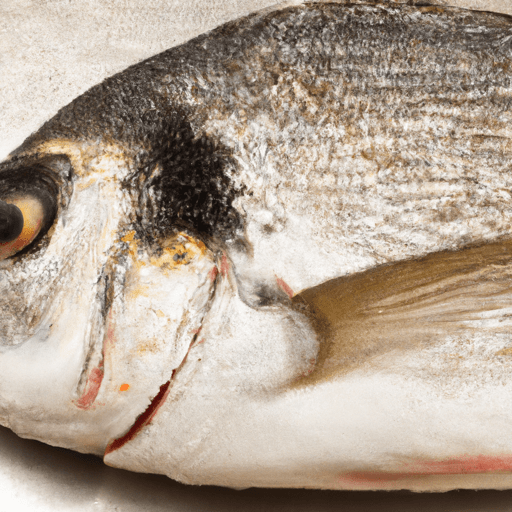All About Seabream: A Delicious and Nutritious Catch
Whether you’re a seafood enthusiast or simply looking to explore new flavors, seabream is a delightful catch that shouldn’t be overlooked. This popular fish, also known as bream, offers a delicate and distinct taste that can elevate any meal. Join us as we dive into the world of seabream and discover its many culinary wonders.
Taste and Texture
Seabream boasts a wonderfully tender meat with a subtly sweet flavor. Its flesh is moist and flaky, making it both easy to cook and enjoyable to eat. When cooked, it develops a mild and delicate taste, which pairs beautifully with a wide range of flavors and spices. Its versatility in the kitchen allows for various cooking methods, ensuring there’s a seabream dish to suit every preference.
Common Uses in Cooking
Seabream’s versatility makes it a staple ingredient in numerous cuisines around the world. Whether grilled, baked, fried, or steamed, this fish never fails to impress. When choosing a cooking method, consider enhancing its flavors with complementary ingredients such as lemon, garlic, herbs like thyme or dill, or even a splash of white wine. Seabream also makes an excellent addition to hearty seafood stews, adding a delicious depth of flavor.
In Mediterranean cuisine, seabream takes the spotlight in classic dishes such as “Dorade en Croûte” or “Loup de Mer” in France, “Orata al Sale” in Italy, and “Tsipoura” in Greece. Its versatility allows it to be the star of both casual weeknight dinners and fancy dinner parties. Whether you’re a seafood lover or just beginning to explore new flavors, seabream is a fantastic choice that is sure to please.
Nutritional Value
Beyond its exquisite taste, seabream also offers a host of nutritional benefits. Packed with high-quality protein and essential omega-3 fatty acids, this fish provides a healthy boost to your diet. Omega-3 fatty acids play a crucial role in supporting heart health, brain function, and reducing inflammation in the body. Additionally, seabream is a good source of vitamins B6 and B12, niacin, selenium, and phosphorus, contributing to overall well-being and vitality.
Interesting History and Facts
Seabream has a rich culinary history that dates back centuries. It has been enjoyed by different cultures throughout the Mediterranean and European regions for generations. In ancient Greece, seabream was considered a symbol of prosperity and was often offered as a tribute to the gods.
Interesting fact: The name “seabream” encompasses a variety of fish species that belong to the Sparidae family. This family includes popular members like gilt-head bream, red porgy, and black bream. Each species offers its unique nuances in terms of taste and appearance, making for an exciting culinary exploration.
Seabream is a true culinary gem, offering a delicate and versatile flavor that can elevate any meal. Its taste, ease of cooking, and nutritional benefits make it a fantastic choice for both seafood enthusiasts and those seeking to incorporate healthier options into their diet. Whether you’re grilling a whole seabream for a special occasion or pan-searing fillets for a quick and delicious weeknight dinner, this fish is sure to impress. So go ahead and dive into the world of seabream – your taste buds will thank you!
Seabream
- The term “seabream” refers to a variety of saltwater fish species belonging to the Sparidae family.
- Seabream is native to the Mediterranean Sea, but they can also be found in other parts of the Atlantic Ocean.
- Common types of seabream include gilt-head bream, red porgy, white seabream, and black seabream.
- Seabream is highly regarded in Mediterranean cuisine and is commonly used in dishes from countries such as Spain, Italy, and Greece.
- It has a delicate, slightly sweet flavor and a firm, white flesh that makes it suitable for grilling, baking, or frying.
- Seabream is a good source of protein, low in calories, and provides essential vitamins and minerals such as vitamin B12, selenium, and potassium.
- It is also a healthy source of Omega-3 fatty acids, which are beneficial for heart health.
- Seabream is known for its good texture retention during cooking, making it versatile for various culinary applications.
- In historical significance, seabream was a symbol of prosperity and wealth in ancient Roman culture, often served at banquets and feasts.
- Due to its popularity, seabream is also a target for commercial and recreational fishing, with sustainable fishing practices being encouraged to maintain its population.




Use the share button below if you liked it.
It makes me smile, when I see it.